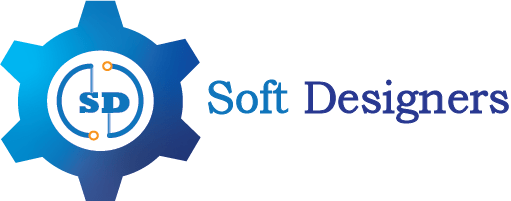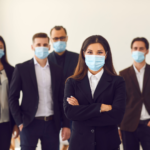Healthy Employees, Productive Workplace: A Deep Dive into Health and Safety in the Workplace
Introduction:
Health and safety in the workplace form the foundation of a productive and harmonious work environment, ensuring the physical and mental well-being of employees while safeguarding them from potential hazards. Health and safety measures not only prevent accidents and injuries but also contribute to higher employee morale, increased job satisfaction, and better overall performance. By prioritizing health and safety, organizations demonstrate their commitment to their workforce’s welfare, leading to a more engaged and motivated team.
The relationship between the components of employee health, workplace safety, and productivity creates a positive reinforcement cycle. As each element strengthens the others, organizations that prioritize these factors create a work environment where employees thrive, leading to increased productivity, improved business outcomes, and a stronger company culture.
The National Safety Council found that companies with strong safety cultures have employee injury rates that are 70% lower than companies with weak safety cultures. This leads to reduced absenteeism and increased productivity.
A healthier workforce is not just beneficial for individual employees; it has a ripple effect on the entire organization. Reduced absenteeism, higher morale, and better work quality are interconnected outcomes that create a positive cycle of improved productivity and organizational success. Organizations that invest in the health and well-being of their employees reap the rewards of a thriving, motivated, and high-performing workforce.
Learn about the Core Components of Health and Safety in the Workplace:
The key elements of a comprehensive health and safety program are:
- Safety Committees and Employee Involvement:
Establish safety committees comprising both management and employees to discuss safety concerns, review incidents, and suggest improvements. Involving employees in the decision-making process fosters a sense of ownership and encourages a collaborative approach to safety.
- Safety Training and Education:
Safety training and education are crucial for equipping employees with the knowledge and skills needed to perform their tasks safely. This includes training on using equipment, handling hazardous materials, following emergency procedures, and understanding workplace hazards. Regular refresher training ensures that employees stay up-to-date with best practices.
- Injury Prevention Strategies:
Injury prevention strategies involve identifying potential hazards and taking proactive measures to prevent workplace injuries. This can include implementing safety protocols, providing personal protective equipment (PPE), and using engineering controls to mitigate risks. By focusing on prevention, organizations can reduce the number of workplace accidents.
- Emergency Response Planning:
Develop comprehensive emergency response plans that cover a range of potential scenarios, such as fires, natural disasters, and medical emergencies. Conduct drills to ensure that employees are familiar with evacuation routes, assembly points, and emergency procedures.
- Behavioral Safety Programs:
Implement programs that focus on changing employee behavior and attitudes towards safety. These programs promote a safety-conscious culture by encouraging employees to watch out for each other’s safety, report unsafe conditions, and actively participate in safety initiatives.
- Data Analysis and Continuous Improvement:
Regularly analyze incident data, near-miss reports, and feedback from employees to identify trends and areas for improvement. Use this data to refine safety policies, procedures, and training programs to continually enhance the effectiveness of the health and safety program.
The role of Soft Designers company culture in promoting health and safety is essential for creating a safe, productive, and supportive work environment. We encourage open communication and make it easier for employees to voice safety concerns, report hazards, and provide feedback on health-related issues. This enables prompt identification and resolution of potential risks.
To know more about our EHS Solution click below:
The challenges facing by manufacturing industry without EHS Software Solution:
The manufacturing industry faces several challenges related to employee safety due to the nature of its operations, use of heavy machinery, and complex work environments. Here are some key challenges:
Hazardous Work Environment:
Manufacturing often involves heavy machinery, chemicals, and hazardous materials. The presence of these elements increases the potential for accidents, exposure to toxins, and other safety risks.
Manual Handling and Ergonomics:
Employees in manufacturing often engage in manual lifting, carrying, and repetitive motions. These tasks can lead to musculoskeletal injuries if proper ergonomic practices are not followed.
Chemical Exposure:
Exposure to hazardous chemicals poses a significant risk. Adequate training, proper handling, and the use of personal protective equipment (PPE) are essential to mitigate this challenge.
Lack of Awareness:
Some employees might underestimate the risks associated with their tasks, leading to complacency and a lack of attention to safety protocols.
Emergency Response Preparedness:
Manufacturing sites must be prepared for various emergencies, including fires, chemical spills, and equipment malfunctions. Having well-rehearsed emergency response plans is crucial.
Addressing these challenges requires a comprehensive EHS software solution which helps in robust training, clear communication, regular equipment maintenance, proactive hazard identification, and fostering a culture of safety that values employee well-being.
There will be a solution to overcome the above challenges. Here are some software solutions and strategies that can help overcome the challenges faced by the manufacturing industry in employee safety:
1. Hazard Identification and Risk Assessment Software: Implement software that assists in identifying workplace hazards and conducting risk assessments. This enables proactive measures to mitigate risks and prioritize safety.
2. EHS safety software: Use Environment, Health, and Safety (EHS) management software to streamline safety processes, incident reporting, corrective action tracking, and compliance management.
3. AI PPE detection camera: AI-powered Personal Protective Equipment (PPE) detection is an innovative solution for enhancing workplace safety by ensuring that employees are wearing the necessary protective equipment.
4. Compliance Tracking Solutions: Use software to track and manage compliance with safety regulations, enabling automated alerts for renewals, audits, and inspections.
5. Mobile Apps for Reporting: Provide employees with mobile apps for reporting hazards, near-misses, and incidents on the go. This encourages a reporting culture and ensures timely identification of issues.
6. Cloud-Based Collaboration Tools: Use cloud-based platforms for communication and collaboration on safety initiatives, sharing best practices, and distributing safety-related updates.
7. Emergency Notification Systems: Implement software that enables rapid communication during emergencies, ensuring employees are informed and guided on proper procedures.
8. Data Analytics for Continuous Improvement: Utilize data analytics to analyze incident trends, identify recurring issues, and implement improvements to safety protocols.
9. Training Management Software: Adopt software to manage and track employee training, ensuring that everyone receives proper safety training and certifications.
By integrating these software solutions and strategies, the manufacturing industry can effectively address safety challenges, enhance operational efficiency, and create a culture of safety that prioritizes the well-being of employees.
Here are some case studies and success stories showcasing how top-class companies have successfully implemented EHS (Environment, Health, and Safety) software to enhance their safety and compliance efforts

Conclusion:
In the ever-changing landscape of safety, the journey towards a secure and thriving work environment is ongoing. As leaders, employees, and stakeholders, it’s crucial that we remain vigilant and adaptable to the dynamic challenges and opportunities that lie ahead.
Safety protocols that were effective yesterday might need adjustments to meet the demands of tomorrow. Regulatory requirements can shift, new technologies emerge, and best practices evolve. Staying updated is not just a choice; it’s a responsibility that ensures the well-being of every individual within our workplaces.
Adapting our strategies isn’t just a response to change; it’s a proactive stance against potential risks. It’s an acknowledgment that safety isn’t static; it’s a living, breathing commitment that requires our constant attention. By continuously fine-tuning our safety measures, we create a foundation of resilience that can withstand any unexpected challenges that come our way.
As technology advances and our understanding of safety deepens, there’s an abundance of resources, training, and expertise available to us. By embracing these tools and insights, we empower ourselves to create a culture where safety isn’t just a rule; it’s a shared value.
So, let’s stand together on the edge of change, with our eyes open to the future. Let’s commit to learning, growing, and refining our safety strategies. Let’s adapt and innovate, always putting the well-being of our colleagues first. By doing so, we not only protect ourselves and those around us, but we also contribute to a workplace where everyone can thrive, succeed, and look forward to each day with confidence. Stay updated, stay prepared, and let’s build a safer, brighter future together.
Prioritize and invest in your workplace health and safety initiatives today. Every step you take towards creating a safer environment ripples into a more secure future for everyone involved.







